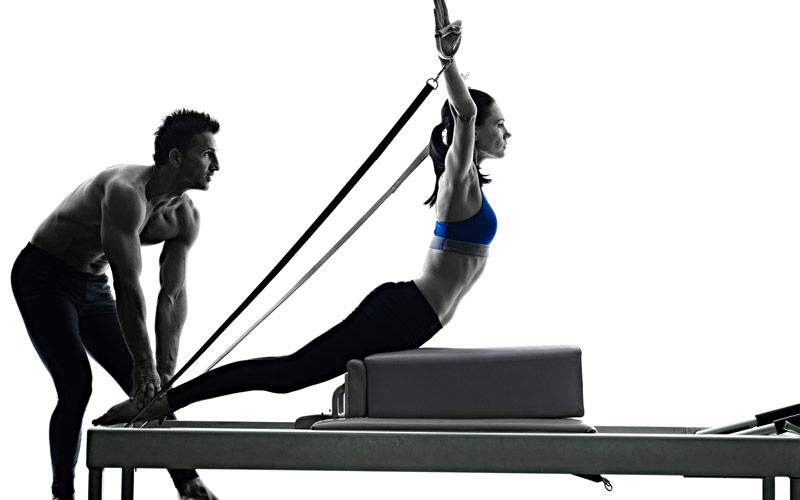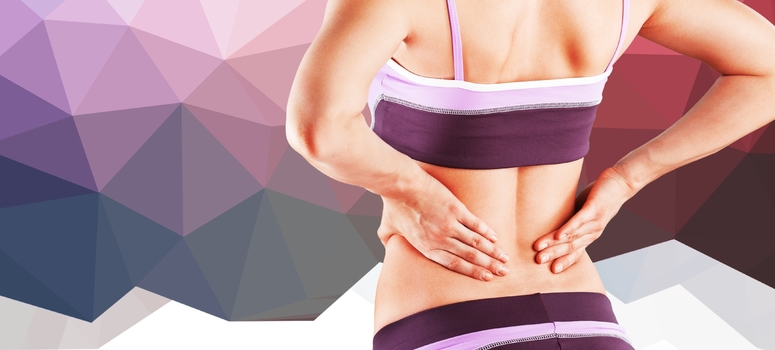August 2017 NewsBlast | Article 3
16 Aug 2017 / NAFCNAFC NewsBlast - August 2017 | Ed 2
Making Yoga and Pilates Accessible
Written by: Tammy LeBoss, The FitPro Foodie
References Credits: NAFC Foundations of Movement Mat Pilates, NAFC Yoga200™
 Copyright: Ostill / 123RF Stock Photo
Copyright: Ostill / 123RF Stock Photo
How to Bend Safely and Effectively
The human body is designed to move. In daily life activities, we bend, reach, grab, pull, twist and turn. In modern society, most spend much of their day seated with the spine rounded and front body compressed. Driving cars, typing, texting, writing, eating and many other modern tasks cause shoulders to round forward and the upper back to round. Over time, this can lead to kyphosis.
Kyphosis is identified by an excessive rounding (hunchback) of the spine in the thoracic region and a forward head carriage. Backbends assist in slowing, stopping and reversing kyphosis. Backbends, when performed correctly, can help improve posture by strengthening the muscles of the spine and shoulders.
Backbends can be energizing and uplifting. While they can be beneficial for enhancing the health of the spine, participants with certain conditions should avoid backbends. Common misalignments involve compressing the lower back by overarching the lumbar spine, and/or splaying the knees and feet outward (thighs externally rotated).
Backbends should be entered and exited methodically, with care and caution. Very flexible participants may tend to “throw” themselves into deep backbends, exposing them to greater risk of injury. On the contrary, stiffer participants may try to force themselves into a deep backbend that they are not yet ready for. (NAFC Yoga200™).
Pro Tip: Follow deep backbends with a soft transitional pose, such as a Spinal Twist or Happy Baby, before adding counter-poses such as Supine or Seated Forward Fold.
Learn more about how to safely and effectively enter and exit deep backbends. Always apply safe sequencing and be prepared to offer modifications for Locust, Cobra, Upward Facing Dog, Bow, Camel, Wheel poses during yoga, as well as Bridge and Swan in Pilates. With NAFC’s Foundation of Movement and Yoga200™, we’ve got your back!
Written by: Tammy LeBoss, The FitPro Foodie
August 2017 NewsBlast | Article 2
16 Aug 2017 / NAFCNAFC NewsBlast - August 2017 | Ed 2
Making Yoga and Pilates Accessible
Written by: Tammy LeBoss, The FitPro Foodie
References Credits: NAFC Foundations of Movement Mat Pilates, NAFC Yoga200™
 Copyright: Ostill / 123RF Stock Photo
Copyright: Ostill / 123RF Stock Photo
1 Mindset Shift That Could Save Your Low Back
Speaking of back…did you know?
Studies show that approximately 8 out of 10 Americans will experience back problems at some point in their lifetimes. According to the American Chiropractic Association, chronic low back pain is on the rise. Reports say, more than half of Americans who experience low back pain spend the majority of their workday sitting.
Prevent low back issues applying this idea: During exercise, one way to avoid low back pain involves knowing how and when to apply counter poses. This applies when teaching yoga or Pilates, as well as during other forms of strength training.
Pro Tip: To keep your students safe and balanced, speak to the idea of “use everything and overuse nothing”.
To help the body find balance, train it fully yet functionally. And, drop the “no pain, no gain” mindset. Avoid doing 100 reps of the same movement as it may cause muscular imbalances or over development of a certain muscle group. Remember, every part of the body needs equal parts mobility and stability in order to maintain good health.
For example, when doing lots of back-bending, make sure to also do equal amounts of forward folding, as a counter pose. To avoid low back issues, add a gentle twist in the mix as well. Using counter poses can help to bring the body back into its natural state of balance. When nothing is overworked and everything is worked, our bodies are stronger and more functional. Introducing counter poses can also help to keep your students interested and engaged while transitioning from one exercise to another.
Trainers, Yoga and Pilates instructors, how do you stay balanced on and off the mat? What activities engage you when you’re away from the gym? We’d love to hear about how you’re applying the idea of balance in the many areas of your lives. Keep sharing your knowledge and keep learning. The fitness industry is getting more sophisticated, and the world needs smart trainers like you!
Written by: Tammy LeBoss, The FitPro Foodie
August 2016 Newsletter | Article 1
04 Aug 2016 / NAFCNAFC Newsletter
1 Way To Prevent Lower Back Pain
By Tammy LeBoss | thefitprofoodie.com

Make friends with your hamstrings!
A recent study in the American Journal of Physiology suggests that lack of flexibility could be linked to a known marker for cardiovascular disease and the risk for heart attack and stroke: arterial stiffness. The study suggests Improving flexibility with stretching, yoga, or Pilates, "may be capable of modifying age-related arterial stiffening in middle-aged and older adults," and should be integrated as part of a complete exercise routine.
Health benefits aside, for exercisers, making friends with your hamstrings is paramount to developing a rewarding fitness regimen. Tight hamstrings make it challenging to reach correct alignment in athletic performances, yoga postures, weight lifting, and in daily movements such as bending over.
Over-tightness also causes many to overwork their low back, and is a common cause of injuries for athletes. It’s no wonder tight hamstrings have been referred to as a hidden source of many lower back pain issues. Learn more about how tight hamstrings tend to flatten the lower back, causing people to lose the normal curve of the lumbar spine. Help clients avoid lower back pain and lower back injuries—by getting friendly with those hamstrings today! Whether as a pre or post-workout plan, carve out some time to lengthen. Be sure to educate your clients on the benefits of staying flexible.
Here are a few reminders:
- Flexibility is critical to keep aches and pains at bay as we age
- It increases range of motion and athletic performance
- It helps to lessen achy joints and muscles
- Consistent stretching allows greater freedom in daily movements
Learn more about NAFC ANSER™ Principles of Alignment, and say "Goodbye" to low back pain.
Get Aligned. Get Stronger. Play Your Edge!
begin ... prev 1 2 3

